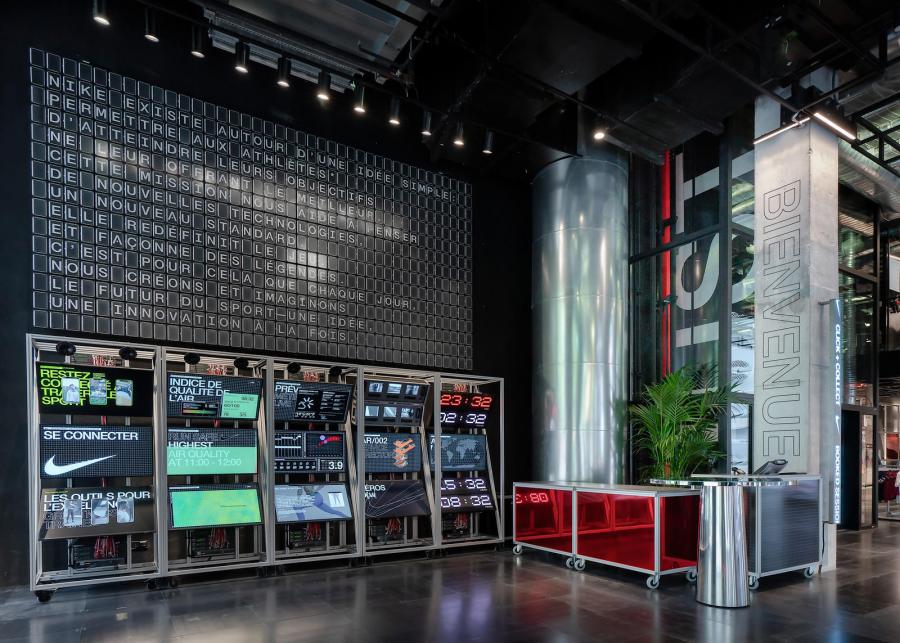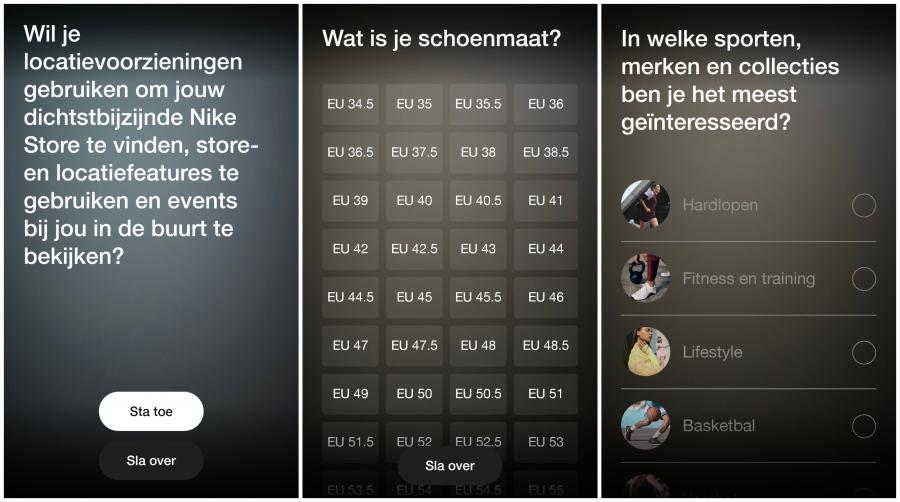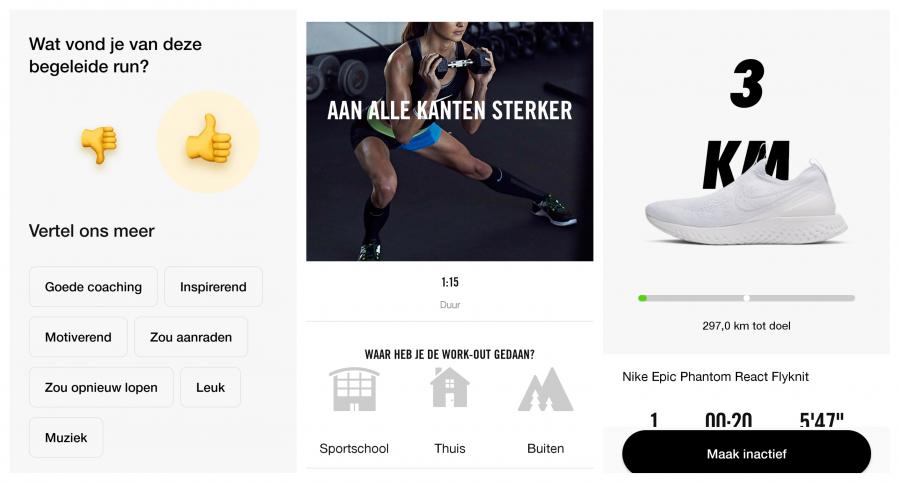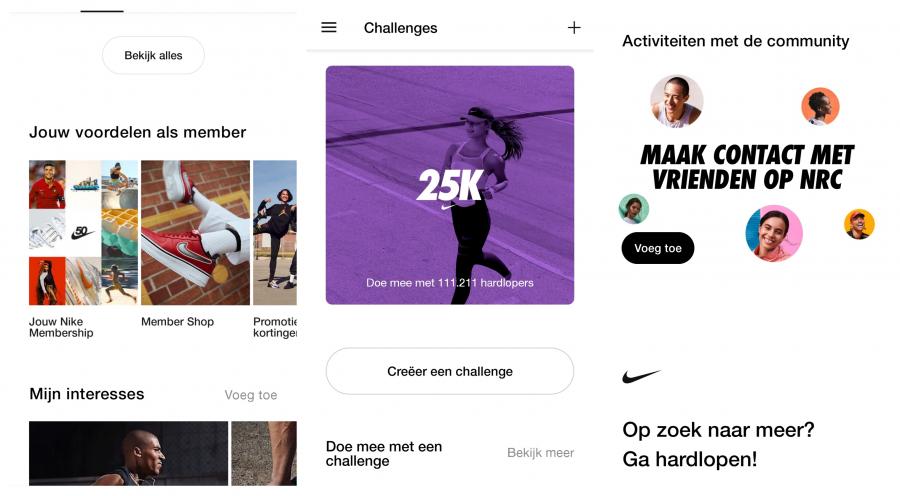
Data-driven shopping: Nike's House of Innovation
Walking through the Champs-Élysées in Paris I encounter a store like something I have never seen before. The four-story ‘’House of Innovation 002’’ by Nike, which nearly spans 2500 square meters, is an impressive building. Upon entering I get overwhelmed with possibilities. An interactive gaming station, a sneaker lab, and the biggest, most innovative, and most diverse product range for women and girls to date. It seems that I landed in a world where the distinction between on - and offline shopping has faded.
As Nike says: this is ‘’the future of retail’’ (Nike News, 2020). If this is true, it is important to find out what these stores are. How does Nike’s ‘’House of Innovation’’ use data to improve customer experience and which implications come with the use of this consumer data?
The store of the future and its features
Nike’s flagship stores, called “House of Innovation,” in New York City (000), Shanghai (001), and Paris (002), offer an immersive and digitally-powered end-to-end consumer journey (Nike News, 2020, para. 2). ‘’House of Innovation’’ is providing outstanding experiences in the athletic-wear and sneaker industry. The first HOI opened in Shanghai in 2018, shortly followed by the New York store one month later (Cicerchia, 2021). The stores were presented as the stores of the future or the most revolutionary retail environments in the world. Both stores aimed to blend physical and digital elements to create an immersive shopping experience. Nike HOI 002 opened in Paris in July 2020. The Paris store showcases the newest innovations and is the brand’s latest proof of its ongoing commitment to transforming the future of retail (Nike News, 2020, para. 2).
HOI 002 offers a range of different experiences throughout the whole store. Some examples are the ‘’Mission Control Wall’’ (fig. 1), which serves as ‘’the heartbeat of Nike Paris’’, as it connects shoppers to the global community of sport (Nike News, 2020). Besides, as said before, the Paris store offers the broadest women’s section of Nike to date. So, it is no surprise that in HOI 002, a game-changing innovation called ‘’Bra Fit by Nike Fit’’ has been introduced. Women now have the in-store capability to receive a fit recommendation for any Nike bra. Lastly, Nike introduces the ‘’Kids Pod’’, where children can play games and challenges like a 360° virtual runners experience inspired by Parkour, these activities are underpinned by the goal to ‘’keep kids moving’’ (Nike News, 2020).

Nike's Mission Control Wall
Besides the location-specific experiences that HOI 002 offers, there is a range of possibilities that span all three of the HOI stores. Assists such as Instant Checkout, Shop the Look, and Scan to Try are all unlocked by your Nike Member app on your mobile phone. Finally, at Nike by You, Nike members can have personal sessions with a designer to customize select shoes and walk away with freshly designed footwear (Nike News, 2020). However amazing the store may seem; it is important to note that most of these technologies and assists are only available when you are a Nike member and have downloaded the app on your phone.
Surveillance capitalism and Nike's data collection
The HOI stores are all data-driven. The store’s stock depends on users’ data that tells Nike which products are popular in the area specific to the store. Nike collects all this data through the huge arsenal of apps that they have introduced to the market:
- Nike app – offers wide-ranging sales support and houses its general loyalty program.
- Nike Run Club – logs users’ fitness goals and progress with a focused interface on running.
- Nike Training Club – logs users’ fitness goals and progress with a wider scope than running.
- SNRKS – provides insider access to launches and events for those customers whose footwear purchases are less functional and more fashionable.
- Nike Connect – uses near-field communication to scan the tag of a jersey, allowing users to unlock exclusive content
- Nike Adapt – controls connected footwear, adjusting its fit or customizing the lights.
- Nike Fit – uses a combination of computer vision, data science, machine learning, and artificial intelligence to cultivate a digital foot morphology based on thirteen data points (Cortes, 2021, para. 3)
Through this broad array of apps, Nike can generate a significant amount of data that helps them improve customer experience and help better understand their customers. Thanks to the brand’s acquisitions of platforms like Datalogue, Celect, Zodiac, and Invertex, Nike can now integrate and access data from all of these sources in real time (Cicerchia, 2021). It seems that Nike has mastered the world of data analytics and makes clever use of it in their retail practices.
Two of the apps that Nike has introduced to the market, namely Nike Run Club and Nike Training Club, are self-tracking apps. Self-tracking is also referred to as lifelogging, personal analytics, and personal informatics (Lupton, 2016, p. 102). Self-tracking is often marketed as a chance for consumers to get to know themselves better and benefit from the apps. However, data collected through these self-tracking apps are often used for commercial gain, since the data holds valuable information on the customer and their purchasing habits (Lupton, 2016).
The data collected by these self-tracking apps corresponds with Shoshana Zuboff's (2019) idea of surveillance capitalism, where data on the lives of humans is increasingly captured and commodified for the core purpose of profit-making. Zuboff argues that big businesses that make use of digital devices to capture data are driven by the goal of economic growth and that these companies, therefore, want everyone to believe that their digital products are ''exactly what you need.’’ The idea of surveillance capitalism raises interesting questions for the case of Nike. Does the company collect data to offer their customers new and interesting experiences, or are they in it just for profit?
For this paper, I collected data directly on the Nike apps. I downloaded three Nike apps: Nike, Nike Run Club, and Nike Training Club. With a short walk-through and usage of the apps in the course of one full day, I want to see what data the apps collect and how the apps offer a greater customer experience. Furthermore, I want to perform discourse analysis on reviews and articles on the store and see how users deal with the data collection.
Using the Apps
Upon opening the apps, users immediately are asked to share personal bits of information such as shoe size, preferred sports, age, or which Nike shoes you are currently working out with. In addition, users are asked to give consent to location-sharing (fig. 3).

Questions asked upon opening the Nike app ‘’ Do you want to use location features to find your nearest Nike Store, use store- and location features, and view events near you?’’ ‘’What is your shoe size?’’ ‘’In which sports, brands, and collections are y
In the Nike Run Club and Nike Training Club, the self-tracking apps, you are asked to provide information on where you performed the workout (e.g., gym or at home) and give your perceived exertion rate upon finishing and logging a workout. The app also introduced a new affordance that allows users to select which shoes they wish to wear for their run, so the user can see how much mileage is made on each pair of shoes. However, with this, Nike also knows exactly when the user will be needing new running shoes.

Questions asked upon completing a workout ‘’What did you think of this guided run?’’ ‘’Where did you perform the workout?’’ ‘’Which shoes did you wear?’’
Besides asking these questions after a workout is logged, the app already measures the time, distance, and speed of your workout. In some cases, when the user is wearing a heart-rate monitor, the app will measure and include your heart rate as well.
In all the apps, there is great emphasis on the feeling of community. The apps constantly show member benefits and discounts, which conveys that ‘’being a member’’ is of great personal use for users. Additionally, members have the chance to participate in global running challenges, invite and add friends to the app and tell their stories on the Members’ Spotlight page (fig. 5).

The App's Interface and the Emphasis on Community ‘’Your benefits as a member’’ ‘’Join the challenge with 111.211 other runners’’ ‘’Activities with the community’’
Optimist perspective: Data coming in handy
Nike collects most of its data through their apps and ensures that this data will serve a specific purpose, namely personalization on its digital retail channels. These apps mostly offer a positive experience for members. Users get the chance to personalize their items and sneakers, get personalized offers for clothing and Nike even notifies them when it is time to buy new running shoes. Besides, the apps offer a great sense of community and fun activities. Participating in challenges and inviting friends to share their workouts are some examples of this.
All these aspects are also present in the HOI stores. The stores adjust their stock on users in the area and their daily practices. Also in-store, members are encouraged to participate in challenges and get the feeling of belonging to a community, since ‘’being a member'' enables shoppers to access a broad range of additional activities in-store.
Pessimist perspective: The imagined audience
Personalization can be a wonderful thing; however, it is important to note that just because data is accessible it does not mean it is ethical to use. Nike presents a unique case since the company does not sell data to third parties, however, there is still a lack of knowledge by users on how the app collects and uses their data. Crawford & Boyd (2012) discuss this concept of an ‘’imagined audience’’, where ‘’users are not necessarily aware of all the multiple uses, profits, and other gains that come from the information they have posted” (673). In the HOI stores, the problem of the ‘’imagined audience’’ seems to be even bigger. In reviews of the HOI 002 stores, shoppers seem to focus solely on the interactive and personalized aspects of the store and do not seem to think about the data that is used to achieve these experiences:
‘’ A friendly and professional welcome and service, for Nike lovers you have 3 floors of everything you can imagine (women and men), for collectors all the ranges are at your disposal, I bought 2 pairs for my part and we can benefit from 25% discount online, thank you and bravo to the whole team’’ – Rani Saidi through Google Reviews (2022)
''Beautiful store.
A huge treat to every Nike fan.
Filled with so much fun history and innovation.
You can customize your products. It has a male and female section and a dedicated shoe section.'' - Tatenda Chidora through Google Reviews (2022)
It can be argued that the usage of data is not the first thing that shoppers think about upon entering a store as innovative and exciting as HOI 002. However, these reviews do a good job of illustrating how users react to innovation and personalization and are often unaware of the data that is used to achieve this.
Beneficial or harmful?
Nike HOI stores offer an interactive digitalized shopping experience that many shoppers can appreciate. Shoppers love to get personalized offers and discounts and get an additional amazing experience performing games and challenges in the stores.
Nike has introduced a plethora of apps to gather data. The entire process of Nike's data collection seems to fall within the concept of surveillance capitalism, where data is used to provide greater profit for the company. Nike’s personalized and interactive experiences work. People are eager to spend a bit more money on shoes, just because they had the opportunity to design them themselves. It is safe to say that Nike cleverly uses data to greatly improve customer experience. However, it is important to ask the question if this data usage is ethical, even though it benefits the customer in some ways. Many consumers do not know that data is being collected and for which purposes it is being used, which raises problems. If Nike were to be more transparent with their data usage there would be a shift in hierarchical powers, which would possibly make these personalized experiences more ethical. Unfortunately, Nike thrives on the process of data mining and therefore it is unlikely this will happen. In conclusion, Nike HOI stores offer new and exciting experiences, which ultimately benefit the customer, but this can only happen if the customer gives their data in return.
References:
Boyd, D., & Crawford, K. (2012). Critical questions for big data: Provocations for a cultural, technological, and scholarly phenomenon. Information, communication & society, 15(5), 662-679.
Cicerchia, S. (2021). The digital transformation in the sneaker market: Nike's in-store customer experience. Cattedra di Digital Marketing Transformation and Customer Experience.
Cortes, F. (2021). Nike: It’s Data Analytics, Just Do It. Digital Innovation and Transformation. Retrieved on May 31, 2022,
Google Reviews. ‘’Nike House of Innovation PAR/002’’ comment by Rani Saidi (2022)
Google Reviews. ''Nike House of Innovation PAR/002'' comment by Tatenda Chidora (2022)
Lupton, D. (2016). The diverse domains of quantified selves: self-tracking modes and dataveillance. Economy and Society, 45(1), 101-122.
Nike House of Innovation Paris. (2020, 28 July). Nike News. Retrieved on May 23, 2022
Zuboff, S. (2019). The age of surveillance capitalism: The fight for a human future at the new frontier of power: Barack Obama's books of 2019. Profile books.